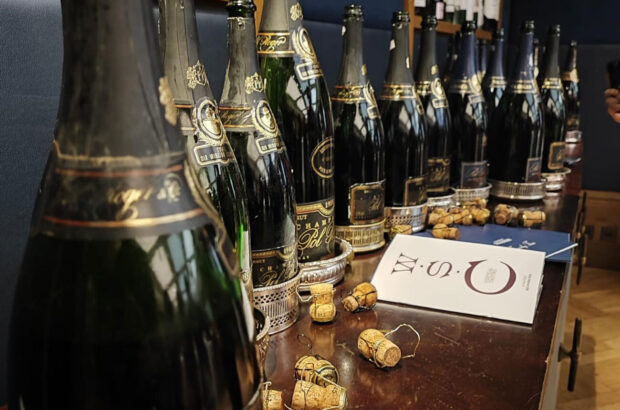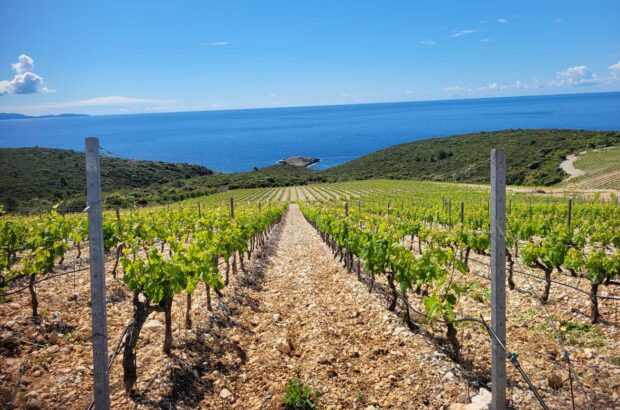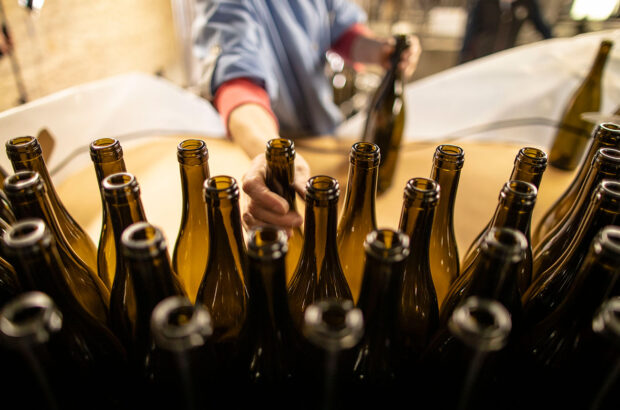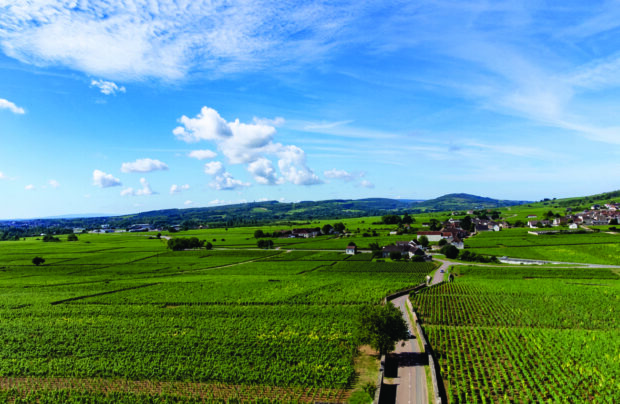Any book is outdated the minute it’s published. I knew, when my own, A Wine and Food Guide to the Loire came out in America in 1996, that it was, at best, a snapshot of a vast viticultural region circa 1995. Since that time, I’ve met dozens of worthy newcomers. Here are 10 of my Loire wine favourites (plus one revitalised one).
Francis Poirel
Francis Poirel, who took over this distinguished property in Quarts de Chaume (one of two crus of the Coteaux du Layon) in 1995, is among the best of Anjou’s recent arrivals. A former maritime socio-economist, Poirel cultivates his seven hectares (ha) of vines according to the stringent dictates of biodynamics. His yields are dramatically low; he harvests by successive tris. Wines ferment in barrique, with no added yeasts. His 1996 Quarts de Chaume was a pure expression of honey, beautifully underscored by citrus and gentle flavours of oak. The 1997, a burnished gold, offered layers of toast, herbal tea, white currants and honey. Lovely. When he can harvest grape by grape, Poirel makes his Cuvée Victor Joseph. The 1995 of this cuvée, with 240g of residual sugar, was liquid gold, hauntingly accented with lemon peel, white currants and dried apricots.
Eric Nicolas
If the tiny appellations of Jasnières and Coteaux du Loire have it in them to make a star, Eric Nicolas, 39, is it. A native of Picardy, he selected this obscure region at the northern limits of Loire viticulture because, after tasting some of its wines, he recognised the distinctive quality of its terroir. Since 1995 Nicolas has been doing a stellar job of realising the potential of that terroir with wines that, good vintage or bad, are elegant and pellucid expressions of ripe fruit grown on a specific site. On his eight hectares, Nicolas replants using a sélection massalle and has increased vine density to 9,300 per hectare. His average yield is 20 hectolitres/ha and he harvests by hand by tri. He uses no weed killers and no added yeasts or sugar. Fermentation takes place in semi-new Burgundy barrels.
The wines are lightly filtered or not filtered at all. His red, Cuvée du Rouge Gorge, is pure Pineau d’Aunis. In 1998 he sacrificed two-thirds of his crop to attain a natural ripeness of 12 degrees. This is a very light red with firm flavours of maraschino cherries, as well as the black pepper characteristic of Pineau d’Aunis. The 1997 was richer, more focused and, in my opinion, stunning. Depending on the vintage, Nicolas has numerous cuvées of Chenin, both in the Jasnières and the Coteaux du Loire appellations. They all seem scented with ripe apples. Favourites include the floral 1998 Coteaux du Loire Cuvée de l’Effraie, a mellifluous wine that rings true from start to long, mineral finish; a more nuanced 1998 Jasnières Les Rosiers; and the beautiful 1997 Jasnières Elixir de Tuf, with 230g of residual sugar, a sublime layering of pineapple, herbal tea, citrus zests and honey. ‘We don’t make technological wines,’ Thierry Puzelat told me. ‘We prefer subtle wines. It’s rare to find wines that combine both finesse and structure unless you have a great terroir like Clos de Vougeot. But we’re aiming to make wines with that kind of finesse, not wines that win competitions.’
Thierry and Jean-Marie
Thierry and his brother Jean-Marie took over the family domaine of 16ha in the Cheverny region in 1994. Their singular wines are now in many ambitious Paris wine bars. There are at least 13 different cuvées, from Cheverny to various bottlings of Touraine AC and Vins de Pays, to Vins de Table. Viticulture is organic, yields are low (less than half of what is legally permissible), harvest is by hand, yeasts are indigenous and wines that ferment in barrel are not filtered. Evidently we aren’t talking about wines from a terroir like Clos de Vougeot. But for wines from a marginal terroir, these have quite a lot to say and are just the kind of thing I like to discover in a wine bar. In general, the whites are unaggressive, mellow and ripe – no matter the vintage – and are always an honest mouthful, particularly the Cheverny le Frileuse, made from 60% Chardonnay; the Touraine le Brin de Chevre, made from Menu Pineau; the Touraine le Buisson Pouilleux Vieilles Vignes, a barrel-fermented Sauvignon Blanc; and the fragrant Vin de Pays, made from Chardonnay Musque.
As for red, the Touraine la Guerrerie is a satisfying blend of Cabernet (Franc and Sauvignon) with Cot (Malbec). La Cailliere, a Vin de Table, is pure Pinot Noir. We’re a long way from Burgundy here, but the wine, while very, very light, is ripe and mineral, with definite character.
Plouzeau
Plouzeau is a well-known name in Chinon. The family has long been one of the appellation’s major négociants. But François Plouzeau, a member of the latest generation of the clan to come of winemaking age, has struck off on his own, developing a 20ha property in the southern reaches of Touraine, where he is practising biodynamics. Plouzeau’s wines all fall under the broad Touraine appellation. They are not epic. Nature didn’t intend them to be. But by setting himself rigorous standards – limiting yields to 45hl/ha (a third less than that permitted under the appellation), for example, and waiting, if necessary, until mid-October to harvest – Plouzeau extracts from these wines the best that they have it in themselves to be.
Many friends in the Chinonais region have made his supple Sauvignon Blanc their house white. Personally, I’ve got a soft spot for his chillable reds. The Gamay, which is light years away from the commonly available industrial versions, has seduced me with its subtle fruit and pronounced mineral character. The Cabernet Franc, in particular the 1999, marries the flavours of black cherries and plums with that tell-tale intriguing minerality.
Quincy
The second wine to receive appellation controlée status, Quincy is, today, a relatively unsung satellite of Sancerre that is devoted entirely to Sauvignon Blanc. The wines are either rustic and Old World in style or clean-as-a-whistle representatives of modern technology; however, most of Quincy’s limited output is firmly in the country wine camp. Enter Jacques Salle, magazine publisher and editor (he is the founder of Vintage magazine), as well as wine broker. In 1996 Salle took over seven hectares from three retired vignerons. And since 1999 he too has been a follower of the principles of biodynamics.
He makes the most wordly Quincys I’ve ever tasted – the result of silex, quartz, clay and gravel-rich soils, low yields, fermentation in new and new-ish barriques and ageing on the lees. Both the 1998 and the ripe, pungent 1997 were discreet and extremely mineral, with the deliciously fleshy character of long sur lie ageing.
Saumur Blanc
Another current favourite in Paris wine bars is the Saumur Blanc from this Domaine. Created in 1996 by Yvonne and Jean-Francois Lamunière, a Parisian couple, Château Yvonne consists of six hectares of prime vineyard land in the commune of Parnay, which lies in the heart of the Saumur-Champigny appellation. Many believe that this zone produces more distinctive whites than it does reds and the Lamunières have devoted 90% of their planting to Chenin Blanc. They hired Françoise Foucault, the wife of Jean-Louis (Charly) Foucault, to manage the vineyards and make the wine. So it’s no surprise that the guiding principles here are the same that have informed the unique Saumur-Champignys from the Foucault brothers’ Clos Rougeard. Organic viticulture is the aim here and yields are kept to around 20hl/ha. The grapes are harvested by hand, and fermented and aged in new oak barrels. There is no added yeast, no fining and no filtering. I found the oak too prominent in the 1998 but was otherwise very impressed by the wine, which was pure, quite limpid and elegant, with delicate scents of lime, minerals and blossoms.
Dominique Joseph
Dominique Joseph is a young man to watch in the Saumur-Champigny appellation. Not quite 30, he took over the family’s 12ha in 1991. Joseph, who hand harvests, punches down the fermenting grapes twice daily and ages his wines in new and semi-new barrels, talks excellent wine and seems well on his way to making it. There are two bottlings. The first is very good Champigny for early drinking. The subtle 1999 had light cherry accents and a strong thread of minerals. The 1996, a much better vintage, was compact, dark and supple, with rich plum flavours. Pelo is both Joseph’s nickname and the name of his top-of-the-line cuvée, which is made from old vines grown on tuffeau soils. It’s a distinct step up, with an even greater mineral presence and luscious flavours of black cherries and cherry pits.
This serious 37-year old Chinonais took over his father’s 7.65 hectares in 1991. Two delicious cuvées of 1996 first attracted my attention, including the Vieilles Vignes bottling, with its fine structure and complex mingling of fruit and spice. Lambert’s painstaking efforts are revealed, too, in more difficult vintages, such as 1999, where his all too drinkable normal bottling – rich with black cherry, pepper and mineral flavours – evidenced a rigorous selection at harvest. Another young man to watch. An insignia consisting of a large D, surrounded by the words l’empreint Denis Duveau, gives you an idea of what to expect here. Domaine de Bel Air, a 13ha vineyard in Cravant, is owned and run by Jean-Louis and Raymond Loup, third-generation vignerons who have hired Duveau as consultant. Duveau, the former owner of Domaine des Roches Neuves in Saumur-Champigny, was the darling of the Paris wine bar circuit until he sold his estate and moved to Chile. Well, Duveau’s back in the Loire now, and where he consults you’ll be sure to find Cabernet Franc in the same plushy style that made his Champignys so popular.
The Loups offer two cuvées of Chinon: La Fosse aux Loups and Le Bois d’Arcon, made from low-yielding 60-year old vines given longer vatting and 18 months in new barrels. The 1999 Chinon La Fosse aux Loups had come-on-in aromas of black cherry and kirsch. Smooth and deeply fruity, it was a well-upholstered, two-dimensional wine. The seductive 1998 Chinon Le Bois d’Arcon was a step up from this. Dark and concentrated, the wine was a blanket of lush fruit flavours.
Courtois’s Wines
Claude Courtois is wine’s Mr Natural. He looks like a Robert Crumb cartoon and his wines are as ruggedly individualistic and as warts-and-all as he is. Determined to be self- sufficient, Courtois has reduced his 12ha of vines in the heart of Sologne to six. The remaining land is given over to sheep, cows and the crops with which to feed them. He even makes his own compost. Yields are no higher than 15hl/ha. No chemicals. No added yeasts or sugar. No filtration. Barrel fermentation and barrel ageing for all his wines. And he has an alembic in which he distills his own marc.
All of Courtois’ wines – there are seven or eight cuvées – are sold as Vin de Table or Vin de Pays de Loire et Cher. They would be entitled to the Touraine appellation, but every time Courtois presented them for the obligatory tasting, the wines were rejected as being atypical. As indeed they are. Case in point: his 1998 Plume d’Ange, a lightly oxidised, faintly fizzy Sauvignon Blanc, which was both fruity and floral without evoking any specific fruit or flower and was strongly mineral and very concentrated. His 1997 Alkimya, made from the botrytised grapes of Menu Pineau harvested at 6hl/ha, is rather maderised and comes on like a Sercial with a strong mineral undertow. Racines, Courtois’s red, is a blend of Cabernet Franc and Sauvignon, Gamay de Chaudenay, Cot (Malbec) and sometimes a bit of Plantet, a hybrid. The 1997 was smooth and spicy; the 1998, rather warm and rustic.
Courtois’ wines are not for everyone. Not polished, not refined, they are emphatically one man’s wines. Marginal but fascinating, particularly for lovers of footnotes and amateurs of wine in all its dimensions. Finally, there’s the Château de Fesles. While it’s hardly a discovery or a newcomer to the Loire scene, it is currently undergoing a significant transition. Long associated with the Boivin family, the great Bonnezeaux estate was purchased in 1991 by Gaston Lenotre, the pastry king of Paris, who, at the same time, bought several other top Anjou domaines, most notably Château de la Roulerie and Guimoniere in Coteaux du Layon-Chaume. The wines were generally disappointing, despite Lenotre’s costly (and much needed) renovations in the cellars. But in 1996 Bernard Germain, who is associated with a number of Bordeaux châteaux including Yon Figeac, purchased the Fesles package from Lenotre. The results since then have been heartening.
Germain
Germain, whose son Thierry has been making impressive Saumur-Champigny at Domaine des Roches Neuves, kept Lenotre’s winemaking team but has benefited from unofficial consultation by Michel Bettane, France’s leading wine critic. Germain makes the entire range of Anjou wine but the interest here is Coteaux du Layon-Chaume and Bonnezeaux, all of which age in new oak barrels. Not everything is perfect, but I loved both the 1996 Roulerie and Château de Fesles, two grandiose Layons. And the 1998s from Guimonière, Roulerie and Fesles, while less rich and luscious than the 1996s, were delectable, impeccably made wines from a difficult vintage.












